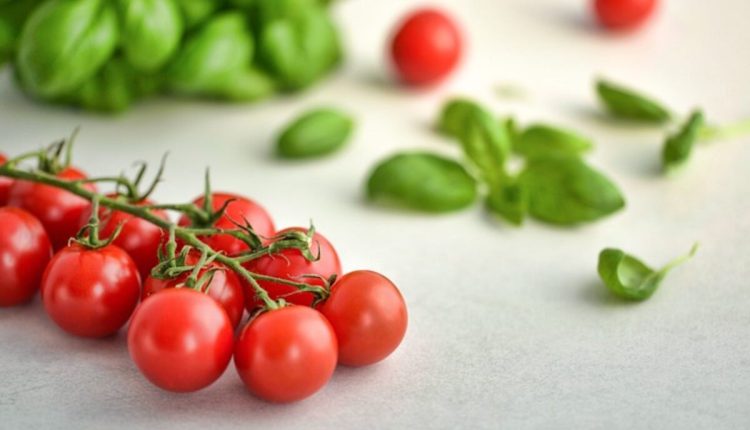While diet often implies restricting certain food groups, the Mediterranean diet encourages healthy eating by emphasizing vegetables, whole grains, olive oil, and seafood while including reasonable portions of meat and dairy. Get the Best information about mediterranean diet.
Try this Mediterranean pizza for an easy weeknight dinner that comes together quickly! Packed with nutritious veggies like artichokes and tomatoes, it takes only 30 minutes from prep time to the final dish!
Crust
The Mediterranean Diet emphasizes a plant-based eating pattern centered on whole wheat flour as a mainstay ingredient, featuring delicious recipes like this homemade pizza crust made with whole grain flour and low sodium content. The diet promotes fresh, healthful foods like vegetables, fruit, beans and legumes, whole grains, and olive oil for nourishment and favors an occasional serving of fish or nuts paired with little to no red meat while forgoing added sugars or sweetened beverages in favor of enjoying wine with meals instead.
If you prefer vegetarian-friendly versions of this dish, use mozzarella cheese instead of the feta. Also, experiment with different herbs and spices instead of the standard Za’atar blend – to create your custom twist on this flatbread pizza!
This tasty Mediterranean Diet meal plan can become part of your weekly family meals and delight everyone at dinner time! Pair with greens as a side dish and red wine for an excellent dining experience. Before adopting such eating patterns into your lifestyle, consult a registered dietitian who can discuss its potential advantages and drawbacks while creating personalized meal plans suited to you and your health requirements.
Sauce
A Mediterranean-style pizza should contain fresh ingredients like tomatoes, mozzarella or feta cheese, peppers, onions, artichokes, spinach, and oregano, yet light on fat and sodium intake. You can make your dough from scratch or purchase premade whole wheat pizza crust at your grocery store if baking is required before adding ingredients.
Olive oil is an integral part of the Mediterranean diet. Extra virgin olive oil (EVOO), which offers an optimal ratio between unsaturated fats and saturated fats and antioxidants to combat inflammation throughout your body, should be used.
If EVOO isn’t your cup of tea, regular olive oil will suffice – though its benefits won’t compare.
This Mediterranean pizza recipe features caramelized onions, roasted red peppers, marinated artichoke hearts, spinach, and feta cheese for an irresistibly healthy bite! Garlic, oregano, and parsley add extra herbs for flavor – making this surefire family favorite! Try serving with Greek salad or roast Turkish potatoes; adding a broken egg would be great for breakfast! The pizza can be stored in the fridge for 3-5 days before being frozen for up to three months!
Cheese
Though pizza isn’t part of a diet centered around Mediterranean values, it can add variety to meals when consumed occasionally. Mediterranean-style pizza differs significantly from many American offerings in that it features fresh ingredients topped with less oil or cheese and little or no meat (if at all).
If you want to create healthy pizza at home, I strongly advise starting with a whole wheat crust recipe. These can usually be found at most grocery stores and prepared from your dough or purchased already made. These recipes typically use moderate olive oil; try sunflower or flaxseed oil instead for a lighter option.
The Mediterranean diet emphasizes plant-based foods like fruits, vegetables, and legumes while encouraging healthy fats like extra-virgin olive oil and restricting sugary drinks and foods. Studies have revealed that following this lifestyle improves heart health while simultaneously decreasing obesity and depression – and may even help protect against dementia.
Though “diet” can often imply restrictive weight loss programs, Mediterranean dieting is more of a lifestyle approach to eating well. It involves enjoying your food slowly while spending more time with family and friends during mealtimes, sipping wine 3-5 times weekly, and moving more.
Toppings
Although pizza may not traditionally fall under the Mediterranean diet, a flatbread pizza can still fit within this healthy eating plan when made with fit ingredients. Add vegetables, lean meats, and heart-healthy cheeses for a tasty Mediterranean-inspired pizza experience! This offers an appealing alternative to high-calorie, greasy versions commonly consumed in America.
Instead of topping your pizza with heavy layers of sauce and cheese, use olive oil drizzles as a light dressing before completing with herbs and vegetables for an enjoyable eating experience.
Add fresh and flavorful vegetables to your pizza for added nutrition and balance. Vegetables that work particularly well include caramelizing onions, fire-roasted red peppers, marinated artichokes, mixed olives, and spinach.
Add crumbled feta cheese for an extra protein-packed touch when crafting your pizza! Feta cheese has low fat and calcium content levels, while its tart flavor pairs perfectly with vegetables and herbs for an unforgettable bite-sized experience.
This pizza can be enjoyed alone or served alongside a nutritious salad to form a complete meal. For starchier side dishes, consider pairing this vegetarian pizza with Greek tomato salad, Turkish lahmacun, or roasted Greek potatoes as starch-rich side dishes. Break an egg onto this vegetarian pizza for a fantastic breakfast pizza option!
Read Also: Drying Poppy Pods










